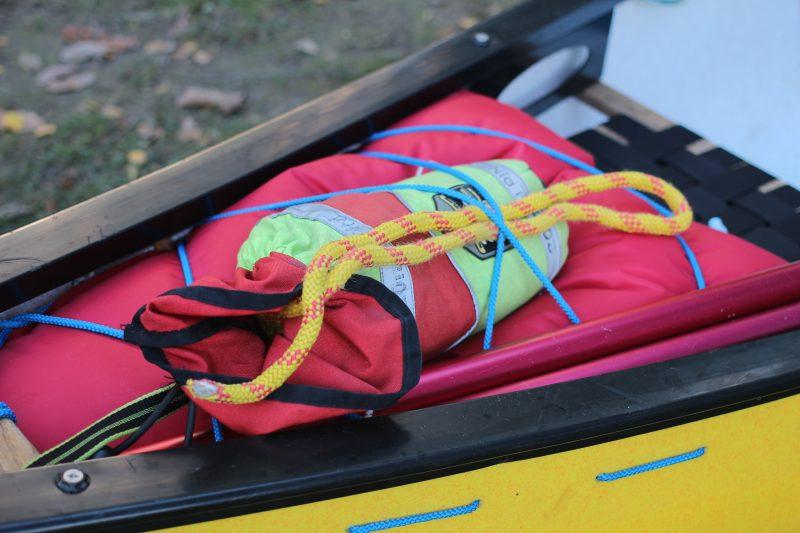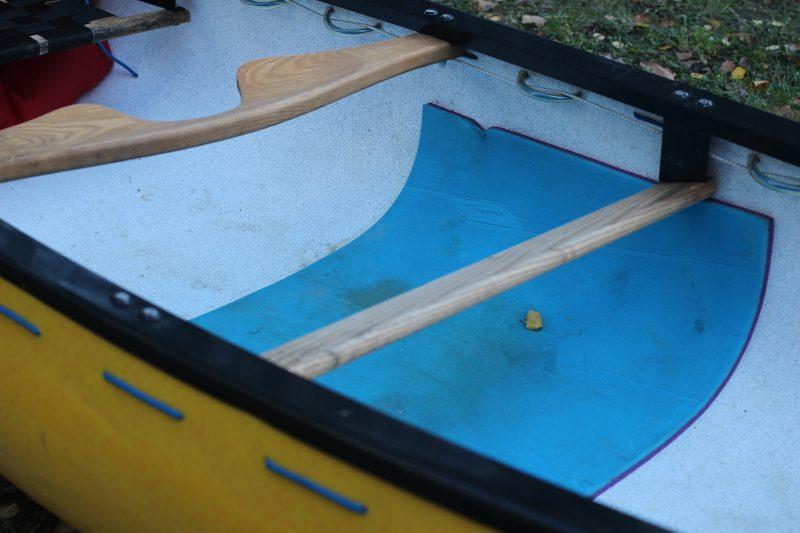Paddling a canoe can be a rewarding experience, successfully navigating rapids, crossing open water, surfing waves and even sailing can give you a totally new perspective, especially if you are used to paddling in a kayak. Getting to know your canoe by outfitting it just right also has its own rewards.
Many canoes come as a shell with seats and a yoke (for carrying solo) installed but most leave it to the owner to decide how they want to adapt their boat to suit them. Depending on your style and where you do your paddling, most paddlers will outfit their boat slightly differently and there are lots of options in front of you. Here are my top tips to help you outfit your canoe …
Make a strong point
If you’re going to be taking your canoe on moving water, you will without a doubt want to create some kind of strong point at the bow and the stern of the boat. As most fixings in canoes are typically just attached to the gunnel on top of the boat, they are not particularly strong should you need to pull on them in a rescue situation. The handles that are attached to the ends of our canoe are not typically up to the job of hauling it out of the river, should it get pinned and we need to pull on it with a rope.
To make a simple a effective strong point, drill a hole on either side of the bow a few inches from the top and away from the end of the boat and thread it with strong floating rope or climbing cord. The loop shouldn’t be big enough to be a handle (as this could get snagged in moving water) – just big enough to clip with a karabiner. I like my end loop to sit flush to the boat to keep it out of the way and to keep my canoe’s clean lines. On the inside of the boat you can secure it by tying two double overhand knots to ensure that it wont slip, remembering to leave several inches of tail after the knots.

Another moving water modification – once you have this strong point at the end of your boat you can attach a swimline to it. The swimline can be attached to the end strong point on the outside of the boat by a short length of rope or a tape that will allow you to position the throwbag neatly in the boat where you want it, rather than to have it hanging off the end of the boat which could create more problems than it solves.
Lace the boat
I like to lace strong cord from end to end of the boat. This gives me strong points to attach my airbags and also gives me the option to create attachment loops on the inside of the boat to so that I have somewhere to clip other kit.
The cord can be threaded through some small pieces of tubing on the inside of the boat to give quick and easy to clip attachment points. I also like to thread bungee cord through these loops on either side so that I can securely store items that I want to keep safe but might need in a hurry such as my spare paddle, poles and throwline.
Airbags
It’s inevitable that you’re going to let some water in and at some point probably become swamped too! When I am paddling solo, I like a big airbag up front and another airbag that fills a lot of the space behind me too. The bigger the airbags, the less water you’ll need to be empty in a rescue. If your air bags are large enough you can climb back in and bail on open water or potentially paddle to the side if on the river.
The driving seat
Adding a kneeling thwart into your boat will make a huge difference, giving you a great position to drive the boat, connecting you with the canoe, and making it more comfortable too.
Where you install your thwart is personal preference. If it is too close to the centre of the boat then you may struggle to get out if you capsize (assuming you have a yoke in the middle of the boat). If it’s way too far back then the trim of the boat will be affected and the boat will be difficult to control.
In a pin situation on moving water a kneeling thwart risks trapping you in the canoe. There are several ingenious quick release systems that allow the thwart to be removed or break free should you become stuck. When I’m out in a trad canoe on the river I always carry a saw to cut the thwart with should I need to get myself or someone else out of this sticky situation.

Having a decent yoke in the boat will make a big difference when it comes to carrying the boat solo on your shoulders. I certainly think its worth having a good one in there for the big portages and walk outs that often happen on a canoe trip.
Adding in a kneeling mat will hugely increase your comfort but also give your knees something to grip onto when you are paddling too.
Finally
It is really easy to go overboard with your outfitting and install lots of additional kit that you may not need for your trip. My advice would be to keep your outfitting simple and lightweight and you will have more fun paddling the boat! Remember you can always add to your outfitting (or take it away) depending on what you where you are going with your canoe and what you will be doing.
Talk to other canoeists, sit in other paddler’s boats and pick up as many tips as you can along the way which should mean when you outfit your boat, it’s perfect for you.






